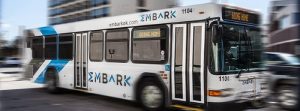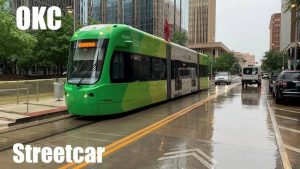
While many major cities across the U.S. report a decline in transit ridership, that’s not the case in Oklahoma City where it has increased in the past year.
Oklahoma City recorded a 16% increase in transit ridership from 2021 to 2022, according to Body Boyd, Community Engagement Officer for Oklahoma City.
He said the growth puts Oklahoma City ahead of San Antonio, Phoenix, Los Angeles, Dallas and Kansas City in terms of the percentage change in ridership. It is also a few percentage points behind New York City, based on figures from the American Public Transportation Association.
“This gives EMBARK one of the strongest recoveries in ridership since the COVID-19 pandemic began in 2020,” said Boyd in response to an inquiry by OK Energy Today.
Oklahoma City bus ridership increased 20.5% from FY 2021 to FY 2022 and 19% from FY 2022 to FY 2023.
Annual Total Fixed Route Bus Ridership:
- FY 2021: 1.85 million
- FY 2022: 2.2 million
- FY 2023: 2.65 million

OKC Streetcar ridership continues to recover post-pandemic. In FY 2023, the streetcar carried its 1 millionth passenger since launch of service in 2018.
Annual Total Streetcar Ridership:
- FY 2021: 174,254
- FY 2022: 222,428
- FY 2023: 216,784The more the government throws at transit systems, the fewer people that ride the buses and trains
Oklahoma City’s gain use of the public transit is opposite of other major cities where over the past three years, ridership plunged because of more Americans working at home. The number of Americans working at home grew from 5.7% in 2019 to 15.2% in 2022.
Despite the federal government pouring millions more into subways and light rain lines, transit commuting dropped by nearly 30,000 between 1960 and 2019.
One report indicated that out of the 56 major metropolitan areas, transit ridership lost between 3% and 60% of the commuter market share. San Francisco lost 57% of its market share.
Transit is said to be vital in big cities. WRONG. Out of the 56 major metropolitan areas (over 1,000,000 population), transit ridership has lost between 3% and 60% of the commuter market share. San Francisco, the second strongest transit commute market, lost 57% of its market share.
Oklahoma City is not in the list of cities with falling transit ridership.
|







